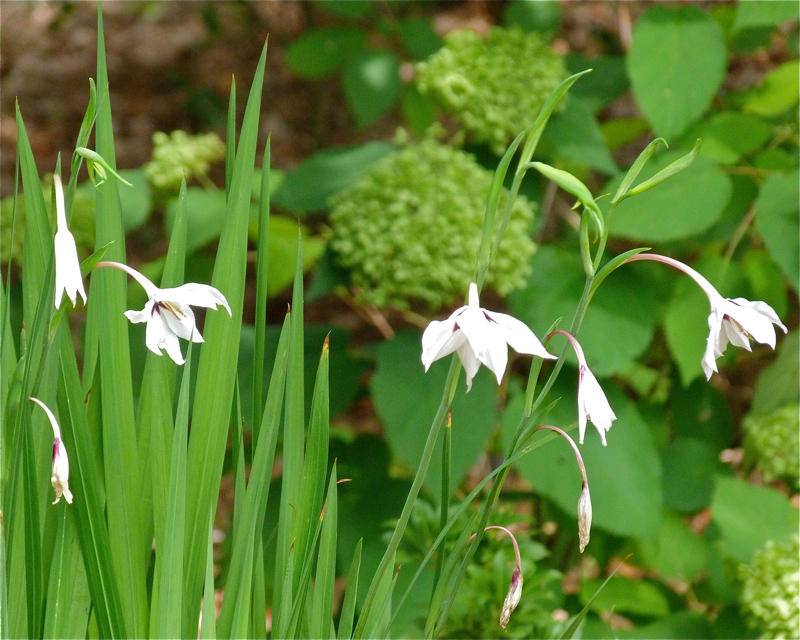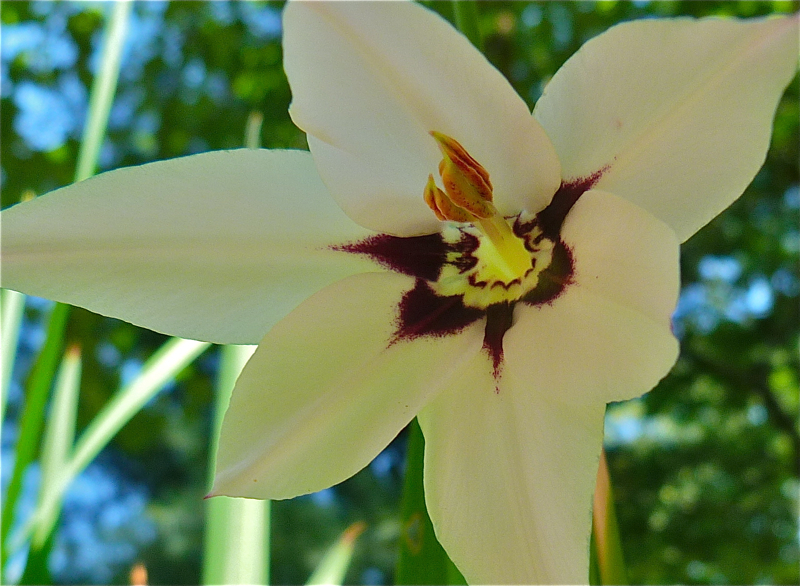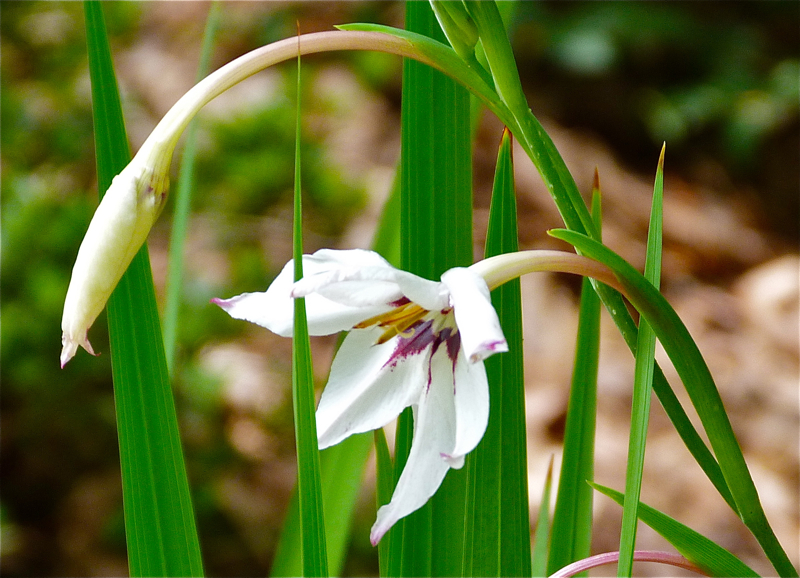A Tour of the May Garden
 Thursday, May 31, 2012 at 10:00PM
Thursday, May 31, 2012 at 10:00PM June begins in a couple of hours. It will be the beginning of hurricane season and the start of summer. (I know summer doesn't officially arrive for twenty more days, but by then we will be hunkering inside our air conditioned spaces and dreaming of fall.) Today I watched the gnats swirl above the front lawn, flying up and down and around in circles. One can barely see them, but there's thousands of them and it's easy to inadvertently walk through the middle of their dance. It's not too bad unless they fly into facial orifices, and that is annoying.
Here is a quick tour of the May garden, beginning in front of the house, where Japanese maples are featured:
Hydrangeas are blooming along the hydrangea walk:
The common daylily grows in abundance near the patio. These enduring flowers are sometimes called ditch lilies. They have been growing on our property for over half a century.
The garden is permeated with the fragrance of gardenias. I have two large shrubs on opposite sides of the property, one in the woodland garden and one down from the patio. It seems that wherever I am, I can get a whiff of them.
Zantedeshia is blooming in the sunnier part of the woodland garden. I did not think it was hardy in my area, but it keeps returning, larger and with more blooms each year:
Here are more assorted May flowers:
I am still in love with my red banana plant, featured in my last post. Here is another look at its outstanding foliage:
Other plants with tropical foliage:Top: Caladium. The insect is a lightning bug. Clockwise from middle left: Stromanthe tricolor; Canna 'Tropicana'; Dracaena Massangeana, also called Corn plant; Coleus.
Dogwood 'Cherokee Sunset' and hostas 'Wedgwood Blue' and 'Sum and Substance' are also great foliage plants:
Finally, a tour of my gardens is not complete without a peek into the woodlands. The large vine is a wild muscadine:
I hope you have enjoyed the tour. Happy gardening!


